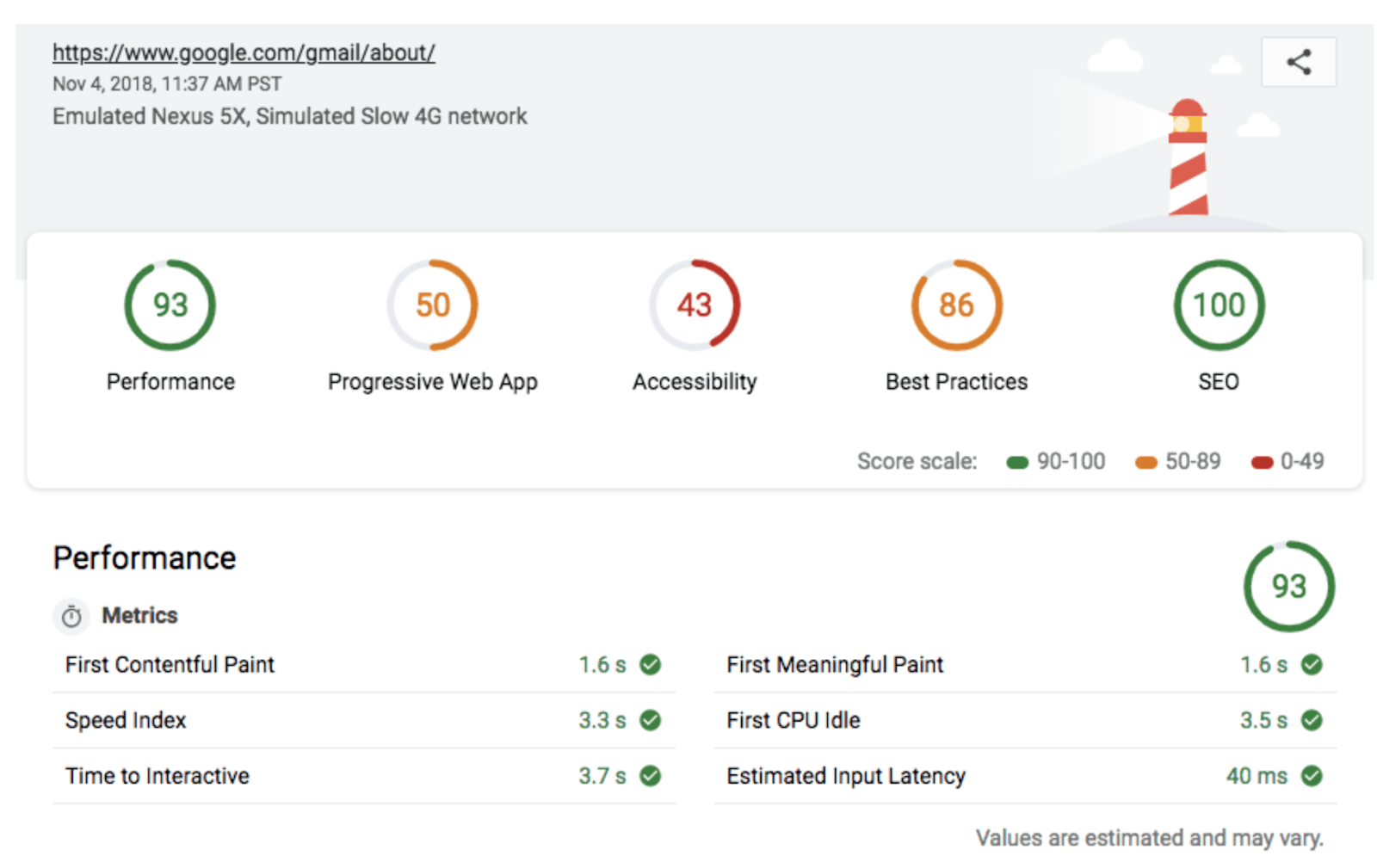Lighthouse scores a wide range of categories (including speed). Think: SEO, Accessibility, and Best Practices. Today we’re going to focus on the Performance category — as it directly relates to the speed of your website.
Here’s everything Google measures within this category:
- First Contentful Paint (FCP): The reason this is a valuable metric is that it is the first time a user knows that something on the website will load — it’s the first indication a website is loading. The First Contentful Paint metric reports on how long it takes for any type of content to be displayed after a page has started to load. For example, an image, a background color, etc.
- Speed Index: This metric works by taking screenshots of a website every 0.5 seconds as it loads. Using these screenshots, it calculates the percentage of content loaded onto the web page in 0.5-second increments and issues an overall speed score. The lower the number, the faster the website appears to load for the user. The goal with this test is to really understand how quickly the user sees content and if there’s anything blocking the website from displaying content as fast as possible.
- Time to Interactive: Another important metric is how quickly the user can interact with the page. This is particularly important on mobile, where the user will directly touch a screen to interact with the page.
- First CPU Idle: This metric relates closely to time to interactive, as it is an indicator of how quickly all initial content/resources within the website are loaded and the CPU of the device enters an idle state.
- Estimated Input Latency: The final metric that Lighthouse reports on has nothing to do with the first load performance of your website. Instead, it attempts to give you a number (in milliseconds) in which your website responds to taps/clicks. The idea is that the faster your website responds to the visitor’s clicks, the more users will consider it speedy and are less likely to leave the site.
Lighthouse will also give prioritized recommendations about how you can help improve the overall speed score. Taking the right steps to make your website faster is essential to a more successful website presence.


